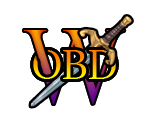 |
| For every choice, a consequence. |
Background Information
Table of Contents
The Fable series takes place in the fictional nation of Albion, a state that, at the time of the first game, is composed of numerous autonomous city-states with vast areas of countryside or wilderness in between. The setting originally resembles Medieval England ("Albion" being the oldest name for the island of Great Britain), or traditional fantasy settings like that of Lord of the Rings. However, the period of time progresses with each game; in Fable II, Albion has advanced to an era similar to that of the Age of Enlightenment, and by Fable III the nation has been unified under a monarchy and is undergoing an "Age of Industry" similar to the real-world 19th-century Industrial Revolution.
In the first Fable, players assume the role of an orphaned boy who is forced into a life of heroism when bandits attack his village and kidnap his sister. The choices players make in the game affect the perception and reaction to their Hero by the characters of Albion and change the Hero's appearance to mirror what good or evil deeds he has performed. In addition to undertaking quests to learn what happened to the Hero's family, players can engage in optional quests and pursuits such as trading, romance and married life, pub gaming, boxing, and theft. Even so, set quests are the motor of the story development. It is an era between the year 1100 and 1300.
Fable II takes place 500 years after the events of the first game. The world slightly resembles a Europe between 1600 and 1800, the time of highwaymen and the Enlightenment. Science and more modern ideas have suppressed the religion and magic of old Albion. Its towns have developed into cities, weaponry is slowly taking advantage of gunpowder, and social, family and economic life present more possibilities - as well as challenges. The sequel basically expands most or all parts of the gaming experience from the previous game, without changing the elementary modes of playing. The continent of Albion is smaller as a game world, since it contains fewer locations, but the locations that remain are more developed and detailed. In contrast to Fable, the solving of set quests is not the basis of the story; rather, the story develops from the player's situation in time and place. This gives the game a sense of more interactivity than the first installment of the series.
In Fable III the setting is 50 years after that of Fable II. The historical development is further advanced since the last version: Albion is experiencing the Industrial Revolution. In all of the versions, the moral development (in a negative or a positive way) is at the core of the gameplay. In this latest version, this moral development is expanded to include not only the personal or psychological but also a more political aspect, as the goal of the game is to overthrow the oppressive king of Albion, as well as defend the continent from attacks from abroad.
Anyway, now that we're done ripping off Wikipedia once more...
Standing in the Battledome
In terms of useability in the Battledome, Fable is actually fairly viable. It has a rich lore that details a fair number of powerful feats that are further supported by feats portrayed in the games and back story. Ranging from lifting the sea into the sky and flooding the world to a weeks long sword fight that carved up mountains and formed new valleys with each blow, raw power is the least of Fable's worries. High tiers clock in at country level while the absolute strongest cap out at continent level.
Fable isn't all about raw power though, for it has a rather nice assortment of hax and other useful powers to complement its ability to make it rain blood through brute force. Primarily stemming from magic, Fable possesses such abilities as elemental manipulation (your generic assortment of shit like the common 4 classic elements), teleportation, barrier creation, telekinesis, clairvoyance, mind control, summoning, immortality (mostly type 1 with some examples of 2 and 6), possession, dimensional travel and BFR, some form of soul contamination/manipulation in the form of The Darkness, intangibility, time manipulation, and a limited form of necromancy
However, speed is somewhat lacking for the level of power they exhibit. Base speed for higher tiered characters caps off at supersonic, with potential for hypersonic+ reaction time due to the fact some characters seem capable of putting up a guard while your character is amplified by time manipulating spells. With support from things like time manipulation, as previously noted, some characters have the potential to fight at hypersonic speeds for a brief period of time.
OBD Profiles
Character Profiles
Protagonists
- Blaze
- Briar Rose
- Gabriel
- Garth
- Hammer
- Hero of Bowerstone, The
- Hero of Brightwall, The
- Hero of Oakvale, The
- Hero of Southcliff, The
- Nostro
- Scarlet Robe
- Sol
- Stone
- Theresa
- Thunder
- Weaver
- Whisper
- William Black
Antagonists
- Commandant, The
- Corrupter, The
- Crawler, The
- Devourer, The
- Great Shard, The
- Lucien Fairfax
- Jack of Blades
- Knight of Blades
- Maze
- Queen of Blades (Fable)
- Summoners, The
- Temptress, The
- Twinblade
Only out for themselves
Weapon Profiles
Note: Some links on this page are affiliate links where, at no further expense to you, I receive a small commission should you purchase an item. For more on these, see our disclosure policy.
